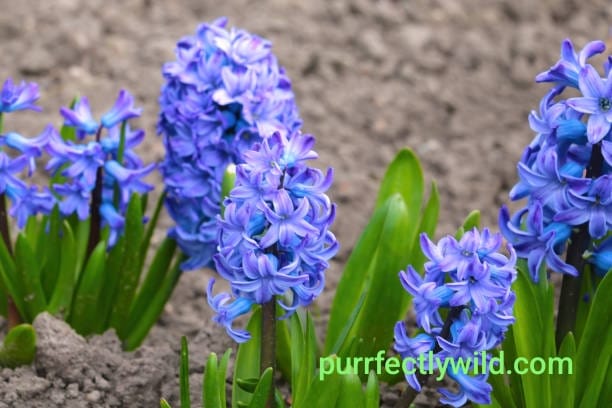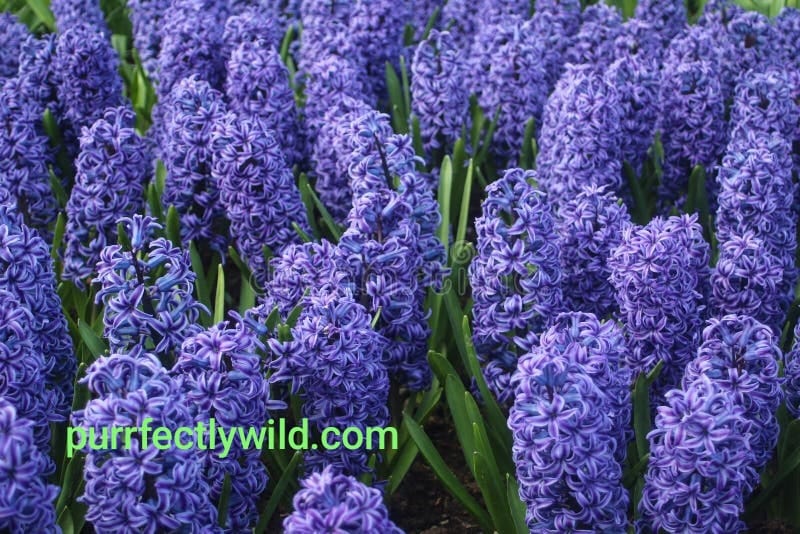As herbivores, deer have a varied feeding spectrum and browse on many plant species in their natural habitats. The hyacinth is a plant that stirs mixed reactions among gardeners, and conservationists. Its rich purple blossoms and sweet scent sets the hyacinth apart from all others in a garden or landscape. In this piece, we cover the curious connection between deer and hyacinths: what recent studies have revealed, which behaviors come into play and how to keep your favorite flowers safe from a browse. The deer browse on the plants and that in turn helps to keep down one of our more troublesome exotic invasive aquatic plant species, the water hyacinth (Eichhornia crassipes).
.
Introduction to Deer Feeding Habits
As herbivores, deer mainly eat grasses, plants and shrubs but also include some fruits and tree bark in their diet. The availability of these food sources, however influences their behavior and habitat selection through their feeding habits. Deer are active creatures that roam foraging as one of their main forms of activity, so it would not be a surprise to see deer in and around lush vegetated areas.
Furthermore, their diet shapes the way they integrate into the ecosystem. Like other large herbivores, deer favor forests as well as meadows and farmland with abundant food. Plants availability changes can move the way in which giraffes quest for meat since plants are being purchased during different seasons of their life cycle, and even at various instances throughout varied years. This explains why many people see deer grazing near gardens or farmland, as the type of grass they eat tends to be found in this kind of vegetation. This information is critical because it can help you to control their numbers and prevent them from eating too many plants.
Overview of Hyacinth Plants

Hyacinth plants have very beautiful bright, fragrant flowers arranged in bunches called spikes in spring. These are starflowers that feature blue, purple, pink or white blossoms on foliage and come back yearly. With the vibrant colors and sweet fragrance, it has considerable demand for people involved in gardening or landscaping as they add aesthetic beauty to outdoor gardens.
As attractive as hyacinths are, their intense scent and taste makes them less appetizing to animals such as deer. Of all flowering bulbs, hyacinth is probably the one high-risk tulip lovers avoid planting among their last fads—deer love them.
The plants of hyacinth are capable and adapt well to growth in the gardens or even parks; best where the humus-rich, moist yet free-draining land happens naturally. They do well in many settings, often being used for decorative landscaping or placed together to form colorful arrays. This versatility makes them ubiquitous in numerous locations, captivating the interest of both plant enthusiasts and wildlife (deer will not even touch the things as they are extremely inedible)
Do Deer Eat Hyacinth: Research Findings
Hyacinth plants have not only bright flowers that has a nice setting; they also beckon those pesky pests as well. Determining whether deer will browse hyacinth plants has been the focus of numerous studies because this information is important to gardeners, landscapers and wildlife managers trying not only to save money but damage in their plantings from browsing by white-tailed deer.

Studies on Deer Consumption of Hyacinth
This research has demonstrated that in general, deer do not eat hyacinth plants. Do Deer Eat Hyacinths — Although deer are opportunistic grazers with a well-rounded variety of food sources, hyacinth plants generally don’t tempt them. For instance, they discovered that the powerful scent and bitter flavor of hyacinths work as natural repellents — hence deer are less inclined to munch on these plants. The principal advantage of hyacinths over other early colour in the garden is their reputed deer-resistance, a good assurance for anyone attempting to grow an ornamental among herds that are increasingly common nuisance appendages around farmlands.
In some rare cases, however deer have been observed to snip of the smaller hyacinth stems and with that eat other parts. In these instances, where palatable vegetation is scarce, deer may resort to plants that they would otherwise shun. All in all, however hyacinth is low on the list of deer-preferred foods
Behavioral Patterns of Deer Towards Hyacinth
In addition, what’s known as behavioral observations of deer around hyacinth plants serves further inference to the research results. When given access to areas where hyacinths are planted, deer simply will not eat these flowers when such surreptitious delights as grasses and shrubs and tender shoots of other plants are around. The avoidance implies that deer eating hyacinths are not an important dietary component and largely disregard them unless other food is limited.
Hyacinths taste less than appealing to deer from what I can gather, and the bulbs of hyacinth plants contain chemical compounds which may cause minor irritation or digestive upset in these ruminants. These natural repellents have the result that deer browse less on hyacinths, and they are one of the plant species to put in your garden if you try making your landscape more resistant against dears.
Impacts of Deer Feeding on Hyacinth Populations
Effects of Deer Grazing on Hyacinth Growth
Wood chip mulch is helpful in preventing it seeding, and deterring deer which graze on the hyacinths. Deer may eat Hyacinths if other food sources are limited so you might get some permanent leaf damage to flower form because they’ll nibble at them but its generally not catastrophic regularly happening feeding…. Deer are to blame for the plant withering in your garden as they feed on flowers and leaves which hinder efficient photosynthesis leading to no chance of growth. This damage can also affect the energy store of a plant making it difficult for them to bounce back in future blooms.
Potential Threats to Hyacinth Species
Streamside hyacinth is threatened by PERSISTENT deer grazing, which can prevent seeds from sprouting and being able to get a foothold in the ground. Put to use on a scale that might make major dents in the degree by which they change some important types of habitat, however and hyacinth numbers will probably crash under sustained grazing pressure — albeit at a slower rate. Therefore, these resources have to be protected from browsing deer in order to maintain their numbers and benefits of health they provide the ecosystem.

Strategies for Protecting Hyacinth from Deer
Fencing and Physical Barriers
One of the best ways to prevent deer from eating hyacinths include fencing and physical barriers. Setting up a fence that surrounds your garden or encircles certain plant beds acts as a physical barrier, which prevents deer from accessing and munching on your hyacinths. The ideal height would be at least 8 feet but whatever your situation, tall fences are considered optimal since deer can jump very high. Above and beyond that, the fence needs to be securely installed without any gaps at ground level for deer who could wriggle beneath.
In tiny gardens, you may shield individual hyacinth plants by covering them or placing wire cages around in a backyard. The additional benefit is that these barriers also serve to keep deer from foraging on the vegetation, as well as other wildlife. If put in place correctly, from the moment your Hyacinths start to grow they will remain untouched and you can enjoy them once a year forever.
Natural Deterrents and Repellents
Deterrents and repellents are also effective means of keeping deer out of hyacinths for those who prefer a natural approach. Some plants give off an odour which deer find repulsive, lavender, rosemary or marigolds are a few others. Try to plant some around your hyacinths, as it produces a natural barrier that keeps deer from trespassing. There are also sprays such as those with garlic or hot peppers, egg-based mixtures that deter deer from eating plants.
These repellents repel deer by activating the animal’s sense of smell and taste to perceive the hyacinth area like an alien object. It is also crucial to reapply these sprays after getting exposed to rain or repeated spraying after certain period of time otherwise they lose their effectiveness. Using a mix of natural deterrents with physical barriers can add an additional level, which will help your hyacinth plants to remain beautiful and viable while keeping deer from the garden.
Conclusion and Recommendations
Large-eyed places like this one in specific shows that deer feeding plays a major role of hyacinth population regulation and conservation efforts must take into an account. By using protective measures we can secure the beauty and varied exhibitions of these fragile plants.
However, the key is in balancing wildlife conservation and plant protection. Deer play an essential role in our ecosystems, but the threats they pose towards some of our vulnerable plants must not go unmanaged as it jeopardizes native plant species and ecosystem health.
In summary, the deer and hyacinth denote original interactions that are pertinent to consideration of wildlife-flora webs in nature. Understand how deer eat and protect your plants using garden tips from UF IFAS Extension. By knowing more about how deer and hyacinths interact, we can all work towards ensuring that future generations have their animal friends around to smell the flowers.
Frequently Asked Questions (FAQ)
- Do deer commonly eat hyacinth? plants?
No, deer generally avoid hyacinth plants due to their strong fragrance and bitter taste. - What are some effective strategies for deterring deer from consuming? hyacinth?
Fencing, physical barriers, and natural repellents like garlic sprays or planting deer-resistant plants can effectively deter deer. - Are there any native alternatives to hyacinth that are less attractive? to deer?
Yes, native plants like daffodils and alliums are often less attractive to deer and can be used as alternatives to hyacinths. - How can gardeners balance the presence of deer with the desire to cultivate hyacinth in their landscapes?
Gardeners can use deer-resistant plants, fencing, and natural deterrents to protect hyacinths while coexisting with deer.


